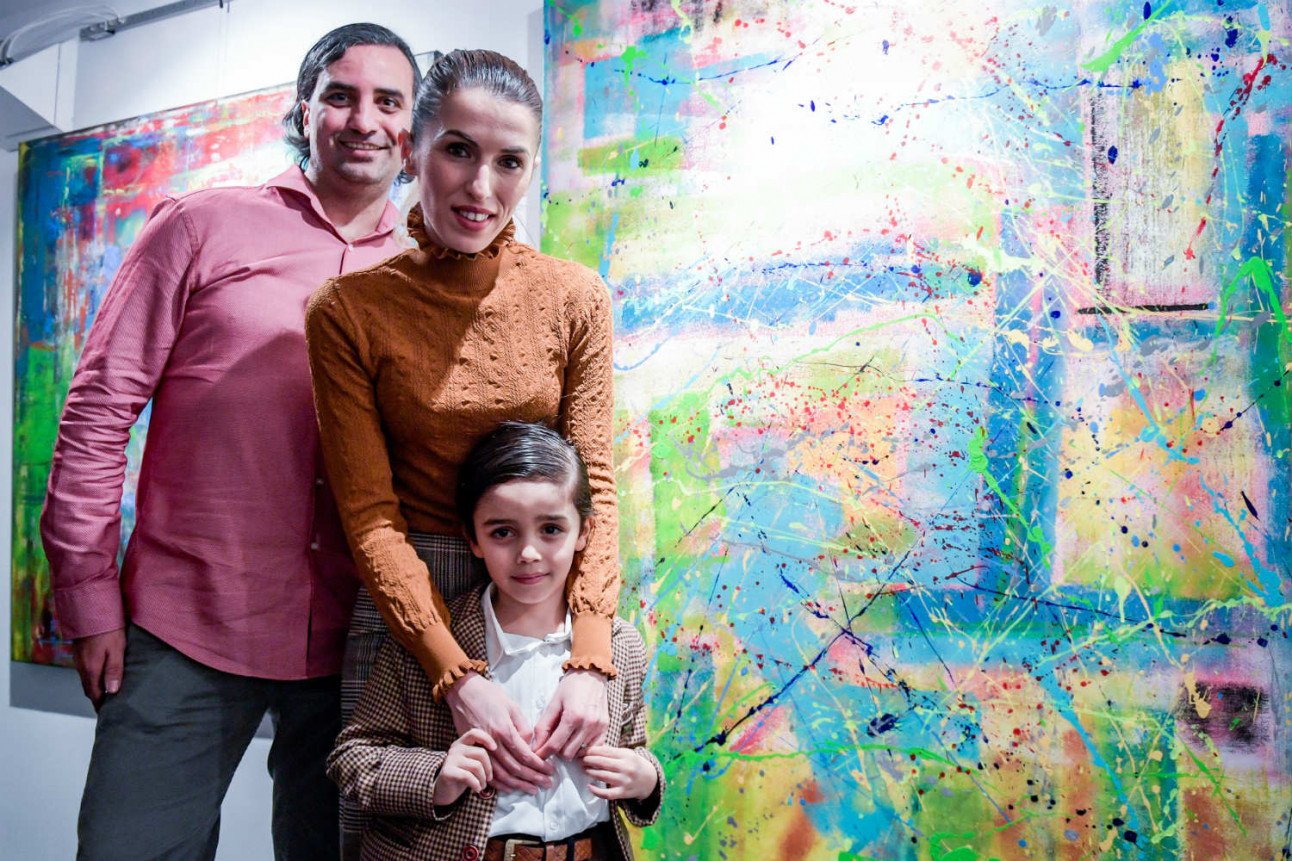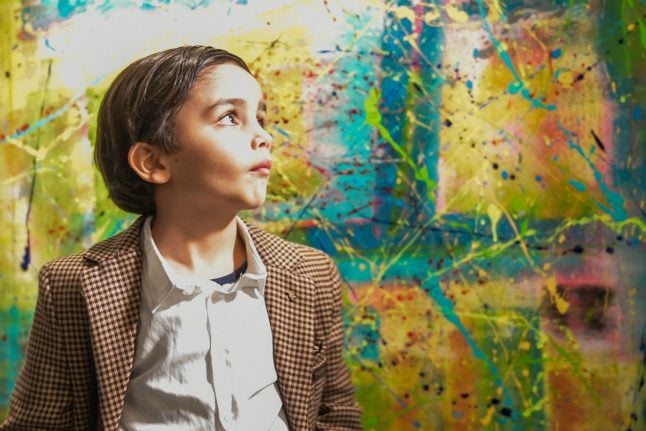With his striped jumper, goofy grin and dreams of becoming a professional footballer, Akar seems just like any other seven-year-old boy.
Yet the Cologne-born youngster is actually an expressionist whizz kid who has taken the international art scene by storm.
Dubbed the “pre-school Picasso” by German media, Akar's paintings now sell for thousands of euros to buyers from across the world.
'Enough action figures'
“At just seven years old, he is established in the art world. There is interest from Germany, France and the USA,” his father and manager, Kerem Akar, told AFP.
READ ALSO: Art in Germany: 10 critically-acclaimed galleries you can't miss
Akar senior discovered Mikail's precocious talent by chance several years ago, when he gifted his son a canvas and some handprint paints for his fourth birthday.
“We had already bought him enough cars and action figures, so we had the idea of getting him a canvas,” Kerem Akar said.
“The first picture looked fantastic, and I thought at first that my wife had painted it.”
“I thought maybe it was just coincidence, but by the second and third pictures it was clear he had talent.”

Akar with his parents Kerem (l) und Elvan at a Hamburg gallery in February 2019. Photo: DPA
Boxing gloves
Akar's talent is visible in his latest collection, a collaboration with Germany and Bayern Munich football star Manuel Neuer.
One work in the collection was recently sold for 11,000 euros, with proceeds going to Neuer's children's charity.
An explosion of colour reminiscent of Jackson Pollock, the piece is typical of Akar's abstract expressionist style.
The seven-year-old tells AFP that his idols include Pollock, Michael Jackson and Jean-Michel Basquiat.
He has also developed his own techniques, which include applying paint by punching the canvas with his father's boxing gloves.
At a presentation of Akar's new work at a private gallery in Berlin last month, one visitor said she was “speechless” upon discovering that the artist was a child who was just starting primary school.
“The balance and harmony of the composition — I wouldn't expect that from a child,” Arina Daehnick, a photographer from Berlin, told AFP.
Diana Achtzig, director of the Achtzig Gallery for Contemporary Art in Berlin, said she was impressed by Akar's “imagination and variation”.
“As long as he has someone supporting him and not exploiting him, then he has a great future ahead of him,” she said.
Football dreams
Akar himself says his dreams for when he has grown up lie elsewhere.
“When I'm older I want to be a football player,” he said, launching into an excited account of a recent 8-0 victory with his school team.
“Painting is quite tiring for me. Sometimes it can take a long time…especially with boxing gloves,” he said.
His father insists that he and his wife are careful not to push their son too hard and to protect him from the trappings of fame.
“If it gets too much for him, we will intervene. We turn down a lot of requests,” said the elder Akar.
“He only paints when he wants to. Sometimes that is once a week, sometimes
once a month.”
Successful brand
Yet Akar senior also admits that his life has changed dramatically since discovering his son's talent, and that he and his wife now “live for art”.
A former salesman and recruitment agent, the 38-year-old has since switched
to managing Mikail full time.
He has founded his own agency, and helped to establish his son as a successful brand.
At the event in Berlin, young Mikail rummages through a box of freshly ordered baseball caps adorned with his official logo.
He now has more than 40,000 followers on Instagram, and will exhibit his work abroad for the first time in the spring.
“Our next exhibition is in Cologne,” said the boy's father. “After that, we are going to Paris!”
By Kit Holden



 Please whitelist us to continue reading.
Please whitelist us to continue reading.
Member comments